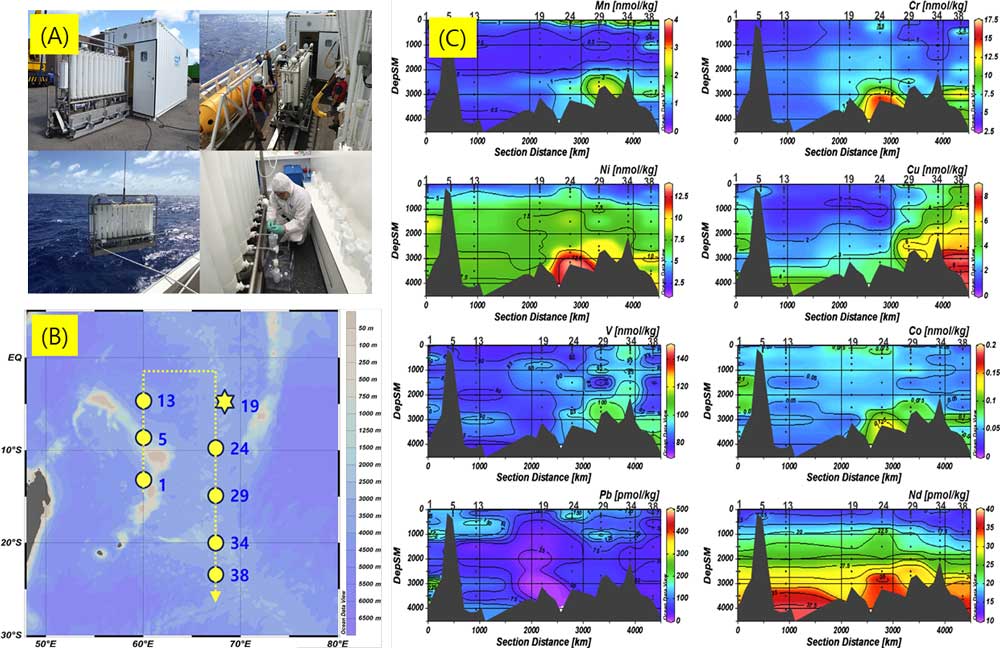Welcome to the first Korean participation in GEOTRACES
Thanks to the newly launched research vessel (R/V) Isabu of the Korea Institute of Ocean Science and Technology (KIOST), and the acquisition of a contamination-free PRISTINE (NIOZ, NL) ultraclean seawater sampling system for trace elements, the Korean marine geochemists are pleased to published their first reliable trace metal (TM) results. Two cruises conducted in the Indian Ocean together with an intercalibration conducted at a GEOTRACES cross over station allowed them to assess their data quality. Thanks to these very positive results, researchers from KIOST and other academic institutes of Korea are currently conducting and planning R/V Isabu-based long-term research in offshore areas (Korean marginal seas) and the open ocean. Welcome to GEOTRACES!

Figure: A) Photographs of operating the PRISTINE ultra-clean sampler at sea and of subsampling (Upper left). B) Sampling station in the Indian Ocean in Apr. 2018 (yellow dots of lower left). Yellow star (station 19) indicates the GEOTRACES crossover station (69.54°E–5.16°S) where samples were also collected in 2017. Yellow dotted arrow line denotes the cruise track. C) Contour maps of some dissolved trace element along the western Indian Oceans (60°E and 68°S). The direction of contour (left to right) is the same as the cruise track in Fig. B. Modified from Ocean Science Journal.
Reference:
Kim, S. H., Ra, K., Kim, K.-T., Jeong, H., Lee, J., Kang, D.-J., Rho, T., Kim, I. (2019). R/V Isabu-Based First Ultraclean Seawater Sampling for Ocean Trace Elements in Korea. Ocean Science Journal, 1–12. https://doi.org/10.1007/s12601-019-0030-x
